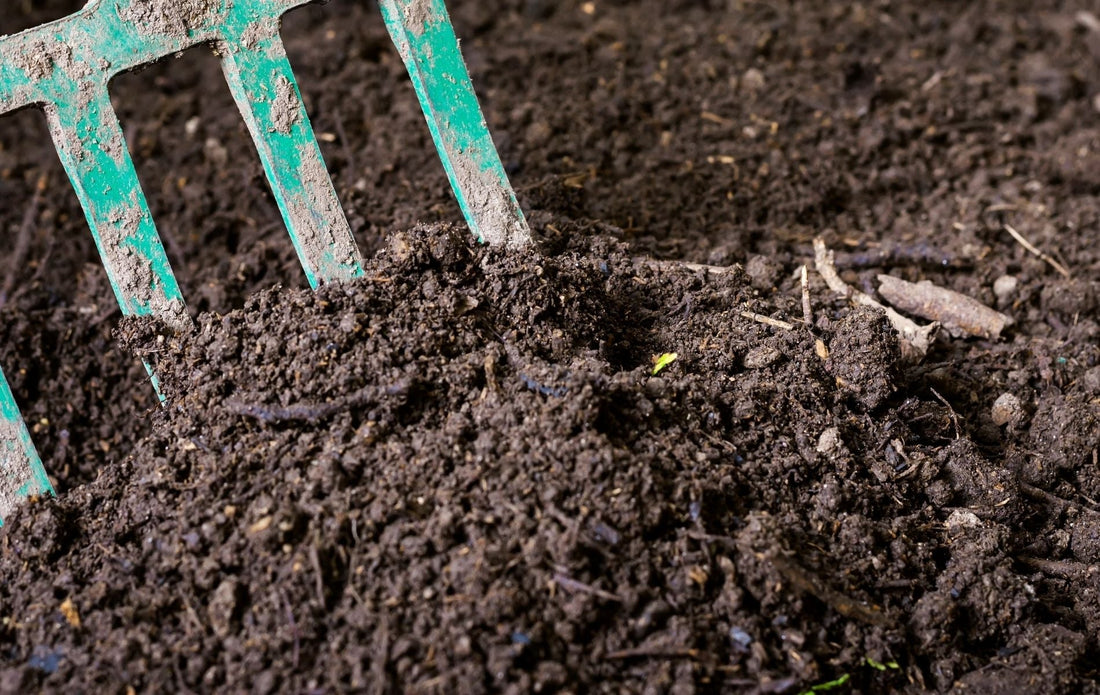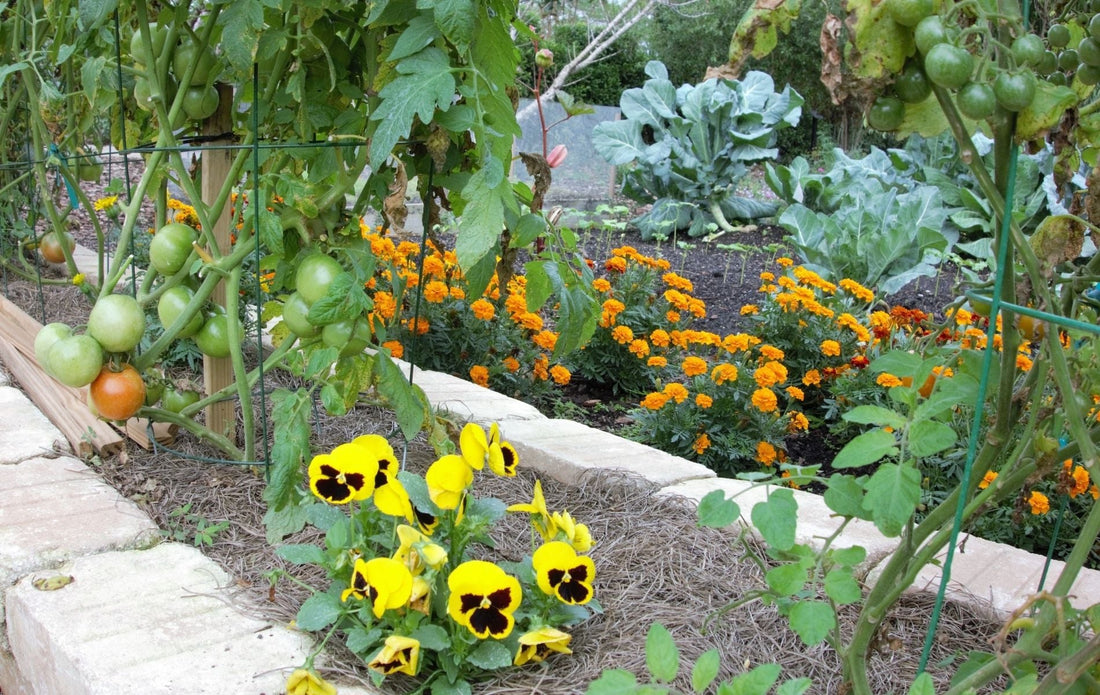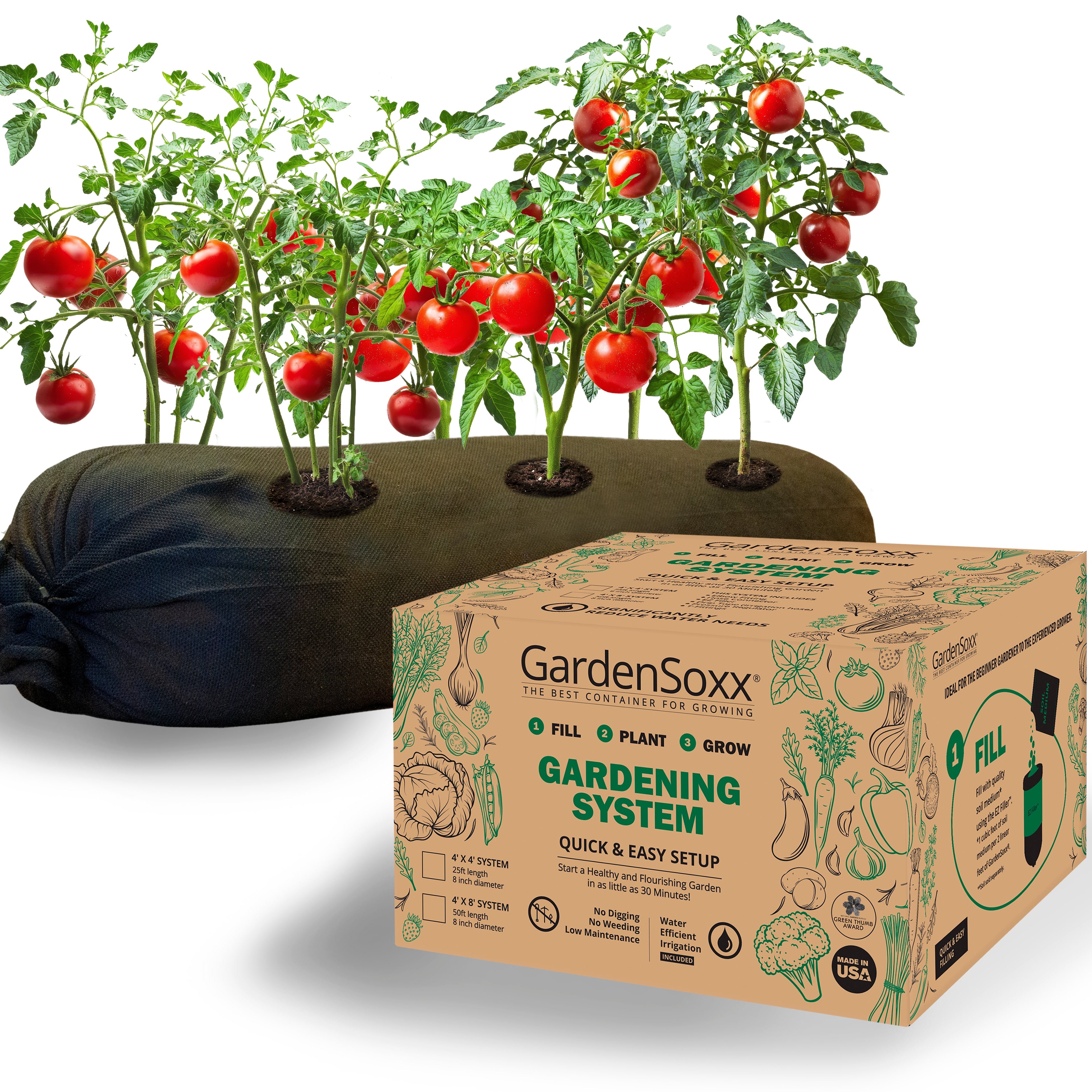Is gardening something you have always dreamed of doing, but are not sure where to begin? Or maybe you did not give it much thought before, but rising food costs have inspired you to start growing your own produce. Maybe you are just trying to get outdoors a bit more often and this seems like a productive solution…
Whatever the case may be for a budding First Time Gardener, we are here to reassure you that it really does not need to be complicated or difficult. In fact, gardening can be low-maintenance, relaxing and downright EASY. It has a ton of benefits, from boosting your mental health, incorporating more movement into your day-to-day, to fostering a connection to nature that most of us lack in our modern lifestyles.

So let go of your expectations, and release the need to have an instagram-worthy, picture-perfect garden (especially in your first year). The key is keeping it simple and stress-free - and really embodying the fact that gardening can be a fun, easy hobby for just about anyone, no matter your experience, schedule or physical ability!
Simple Steps for Starting Small
When planning your first garden, the first thing to look at is location - an outdoor space that gets lots of sunlight is most ideal. Whether it's a small space or larger area, you can adapt your growing style to your needs. Keep in mind that any outdoor space can be a potential growing space - from a balcony to a windowsill, a patio, a back or even a front yard. You do not even need to have workable soil, as containers and fabric planters can be a convenient and effective way to grow on any surface.

The next most important consideration is access to water for irrigation. If you are only growing in a few containers, watering by hand may be the easiest option. However, if you have access to an outdoor faucet or hose, hooking up a simple drip-irrigation system is an easy solution that will save you lots of time and effort throughout the growing season.
Choosing plants based on your personal preferences is advisable - you want to be able to actually use what you grow. There are many low-maintenance crops that are perfect for beginners. Start by finding out your growing zone and frost dates to have a better idea about how long your growing season lasts. This will help to determine what you can grow, and if you need to start seeds indoors or opt for buying pre-established seedlings in the spring.
If you prefer to grow edible plants, consider that even just growing a simple herb garden in pots can be a fun way to get your feet wet in the gardening world. Fresh herbs can add a significant amount of flavor and nutrition to your cooking, making it worth your while to grow them yourself. Many herbs require little maintenance and grow well in a variety of conditions. Mint, Basil and Parsley are all excellent choices for beginners (just be sure to contain your mint to a garden bed or container so that it does not take over your yard!).

Some easy-to-grow vegetables perfect for beginners are: lettuce, radish, zucchini, green beans. For a more ornamental style garden, blooms like Marigold, Cosmos, Violas and Impatiens are easy, low-maintenance flower choices.
Time-Saving Techniques for Easy Gardening
Start small. Remember that it is much easier to expand a garden slowly, year after year, rather than get overly ambitious and potentially overwhelmed in your first growing season. Choose some key crops and focus on those to start - learning as you go. Once you gain more confidence and knowledge, slowly add more to your garden every year.
Think Low-Maintenance. There are ways to set up your garden so that it works for you, instead of you having to work too hard for it. Adding a layer of mulch to reduce watering and weeding can be an excellent way to cut back on those time-consuming tasks. Choosing plants that are tolerant to drought or native to your region will give you a greater chance at succeeding even if you are not tending to them every day.
Plant only once. Consider adding perennial garden plants into your landscape that come back year after year - this way you can plant once and do minimal maintenance at the beginning and end of each season. There are some lovely flowering, herbal and even fruiting perennial garden plants that can elevate your landscape with vibrant colors, edible flowers, or delicious berries, while also drawing in pollinators. Aside from occasional pruning and cleaning up, many of these plants do not require a lot of maintenance to thrive.

Water Efficiently. Setting up an efficient watering system can not only save you time, but can make your garden more eco-friendly. Drip irrigation feeds water directly to plant roots, giving them just what they need to grow, without over watering and without water drops landing on plant leaves that can cause leaves to burn or lead to plant disease. Collecting rainwater, or reusing household water can also maximize efficiency and add extra nutrients and minerals to the soil.
Ergonomic Gardening Solutions for Improved Accessibility
If you have physical limitations, there are gardening solutions that require much less effort and labor and can significantly reduce the strain on your body. Ergonomic gardening tools can make things like digging, planting and weeding much easier tasks to accomplish. Using raised beds, or placing garden containers on a higher surface like a table can reduce the need to bend and kneel, even making your garden wheelchair accessible if necessary.

Ergonomic gardening can also mean choosing the right plants for minimal care and maintenance. Choosing low-maintenance plants that require minimal care, or slower growing plants that need not be tended to often can allow you to enjoy the look of the garden without having to put in a lot of labor. Flowering perennials (like coneflowers, daylilies, and hostas), hardy herbs (like mint, chives, and sage), or vegetables that grow slowly and do not require a continuous harvest (like cabbage, onions, and leeks) are all good choices.
On the other hand, fast-growing vegetables that offer quicker gratification and less effort can also be smart choices depending on your preference. Radish or Carrot seeds can be planted and harvested within a few weeks. Leafy greens like lettuce, kale and swiss chard can yield a continuous harvest for minimal effort, allowing you to enjoy fresh produce all season from just a few easy-to-maintain plants.
Set realistic goals for yourself and remember to take breaks when gardening - only do what you are capable of, focusing more on the enjoyment of gardening over the need to be productive. Gardening for pleasure, and approaching it with a relaxed mindset from the start will take away the expectation and pressure of having to excel at the task.

Avoiding Common Gardening Mistakes & Troubleshooting
Having an understanding of the basic needs of plants is essential for ensuring these needs are met, and sets your garden up to thrive. Light, water and soil are the 3 essential components for plant health. Starting with quality soil or pure compost sets a solid foundation for plant health, and making sure plants are getting adequate water and at least 6 hours of sunlight per day will create optimal conditions for a healthy garden.
Learn to recognize the signs of overwatering (continuously wet soil, wilting or yellow leaves), underwatering (curling or crisping leaves, hard & dry soil) and poor light conditions (leggy stems that are reaching for light, slow growth or lack of flowers/fruit). Paying attention to these signs can help you to correct issues early on and keep your garden on a productive path.

Keep it simple by starting with easy plants, and only grow produce or herbs that you actually consume. Putting time and effort into growing items you will not use can quickly cause you to become discouraged or lose interest. Resist the temptation to take on too much, too soon. Even if it means starting with only a few herbs in a window-box - learning to succeed with that will pave the way for more complex gardening experiments in future growing seasons.
Know where to go for support when things do not go as planned. Finding online resources, or joining local community gardening groups can often help you to resolve common gardening mistakes quickly and efficiently. Local garden centers often employ workers who genuinely love to garden - do not be afraid to ask them for advice. Keeping a gardening journal is also a helpful tool that can allow you to learn from past mistakes and not make them again in future growing seasons.

It is important to remember that there is not one “right” way to garden, and that success will look different for each one of us. Focus on what works for you, and what you are capable of within your space, physical abilities or time constraints. Celebrate your victories, however big or small, and enjoy the journey of learning how to grow your own garden.
Our final piece of advice for the First Time Gardener: Just get started! Get yourself a plant, or a packet of seeds and start growing - with the intention to learn as you go. Do not get hung up on having all the tools or all the knowledge. Many of the best gardeners out there are still experiencing plenty of failures alongside their successes. We encourage you to follow along with our blog, and share your gardening experiences in the comments below to help encourage others who may be on the same path as you!









